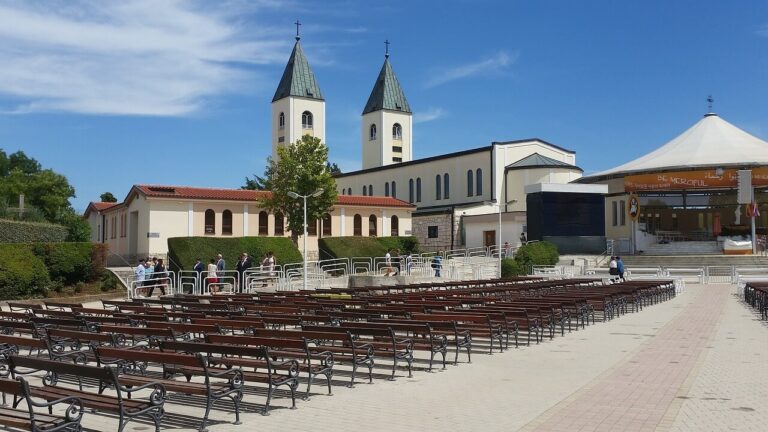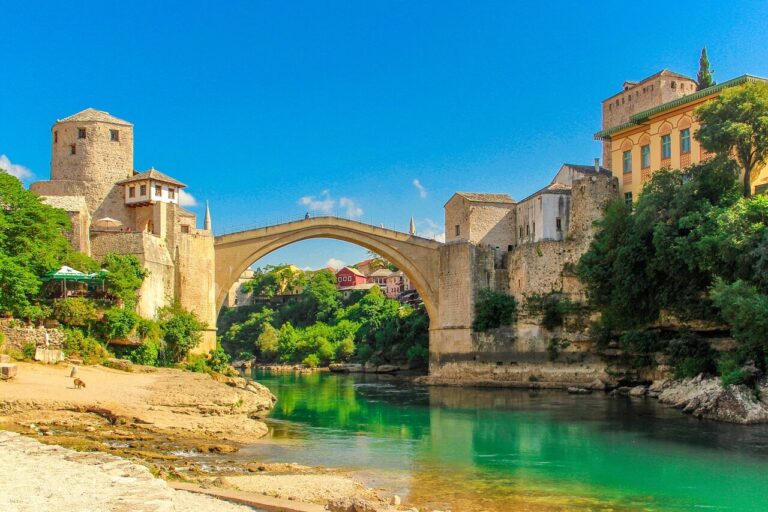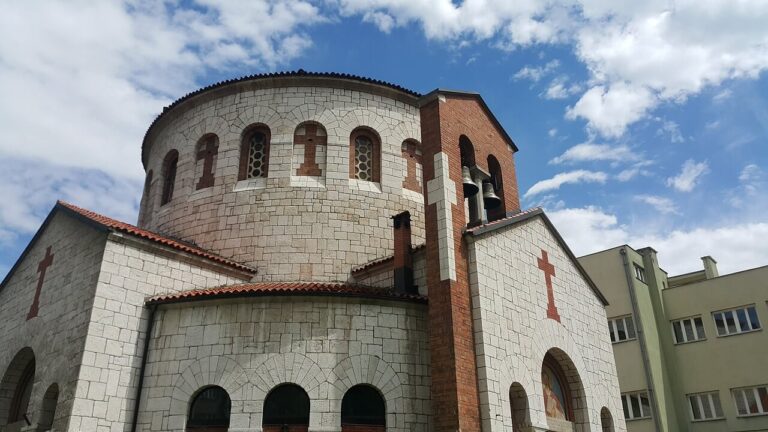Pilgrimage Croatia - Bosnia and Herzegovina
Day 1 – arrival
Drive through Croatia to Šibenik on the Adriatic coast (Dalmatia).
Day 2 – Šibenik – Krka National Park (waterfalls) – Medjugorje.
Šibenik: in the sixteenth century the largest Dalmatian city in terms of population.
Currently, it is the oldest Croatian city on the Adriatic, known for the largest Old Town in Croatia and 2 monuments inscribed on the UNESCO list. These are: the Cathedral of St. James in Šibenik, considered the largest church in the world, and the fortress of St. Nicholas on the islet of Ljuljevac near Šibenik. Šibenik is also a city of festivals, songs and music, it is known for its delicious Dalmatian cuisine, seafood, local spices, homemade olive oil, red wine Drniš Prosciutto.
Krka National Park is known for the highest and considered one of the most beautiful waterfalls in Europe: Skradinski Buk waterfall. Along the Krka River and lakes there are many ruins of old fortresses, mills and monasteries. Particularly noteworthy is the Franciscan monastery on the island of Visovac. You can reach here one of the numerous excursion boats that sail on the lake. Emerald green shining water, seven beautiful waterfalls, ruins from the time of the Romans are just some of the numerous attractions.
Medjugorie is a well-known place of Marian apparition, and for four decades a pilgrimage center in Bosnia and Herzegovina. Medjugorie is a place of peace and rest from the hectic everyday life, an appeal to humanity for prayer, penance and conversion. An important point in the pilgrimage is the visit to the Hill of Apparitions, where, according to the visionaries, the Mother of God appeared and the evening mass in the Church of St. James. The grace of God emanates in Medjugorie which makes the blind see, the weak feel strengthened, the sick are healed, and the spiritually dead awaken to a new life. We recommend a walk to the Mountain of Crosses and the Hill of Apparitions.
Day 3 – Medjugorje – Mostar – Neretva River Valley – Sarajevo
Mostar is a UNESCO listed city. The symbol of Mostar is the Old Bridge over the Neretva River also known as the Bridge of Reconciliation, which was built on behalf of the Turkish Sultan Suleiman the Magnificent. Mostar is also known for its fine wine Zilavka Mostar and Blatina.
The Neretva River Valley – called Croatian California, is one of the most beautiful routes in Bosnia, the Balkans and probably in the world. Passing through the valley, you should visit the Franciscan monastery church of Peter
and Paul, built by Croats, the highest belfry in Bosnia and Herzegovina (78m) and visible from every place in Mostar and the highest in Bosnia and Herzegovina Millennium Cross on Hum Hill (33m).
Sarajevo- the capital and seat of government of Bosnia and Herzegovina.
We will see historical monuments such as: the Latin Bridge (Prinzip Bridge)– the place of the assassination attempt on Archduke Franz Ferdinand, the Sebilj Fountain, the Cathedral of the Heart of Jesus with the JPII monument, the Gazi Husrev-beg mosque – an example of Ottoman architecture in the Balkans, the Eternal Fire Monument– dedicated to the memory of the victims of World War II, the Spasa Tunnel called the Tunnel of Hope, built during the siege of Sarajevo, and now a 25-meter section open to the public as a museum.
In the evening there will be an opportunity for Holy Mass in the church in the Old Town.
Day 4– Sarajevo – Vrbas River Valley – Travnik – Alienations (Sanctuary of St. John of Wildeshauen) – Jajce – Zagreb
The route from Sarajevo to Travnik leads along one of the most important and very picturesque rivers of Bosnia and Herzegovina – the Vrbas River. We recommend a break for typical Bosnian food in Travnik.
Church of Svetog Ive in Podmilačje – this is a sanctuary known all over the world as a place of penance and vow on the eve of St. John (24.06), not only for Catholics, but for representatives of other religions. In the Church of Svetog Ive in Podmilačje – we provide time for spiritual food, i.e. participation in the Holy Mass.
Jajce- the former seat of the kings of Bosnia, before it was conquered by the Ottoman Empire. An opportunity to see the medieval fortifications in the city center (photo break), as well as the Pliva lakes (m.in the 21-meter Pliva waterfall) and wonderfully preserved water mills.
Zagreb is the Pearl of Croatia, known for its beautiful buildings from the times of the Austrian monarchy, now it is the largest and most populous city in Croatia. Important symbols of the city are traditional colorful cupcakes in the shape of a heart and red, made of honey cake, gingerbread cookies. For years, locals have traditionally given them to everyone they care about, showing them love and affection.
Day 5– Zagreb – Marija Bistrica – Zagreb
Marija Bistrica is the most famous Marian sanctuary in Croatia. The famous miraculous black statue of Our Lady in Zagorje has been a pilgrimage destination for over 300 years. Here the faithful will receive comfort in sickness, sinners will receive shelter. This place was visited by Blessed Mother
Teresa, Pope John Paul II. The Holy Father blessed both the place and the Marian shrine. In addition to the beautiful basilica, there is also a Calvary with stations of the Way of the Cross and a 113-centimeter statue of the Virgin Mary with the Child. The Basilica in Marija Bystrica is for Croats what the Basilica of Divine Mercy in Łagiewniki is for Poles.
Day 6 – departure



